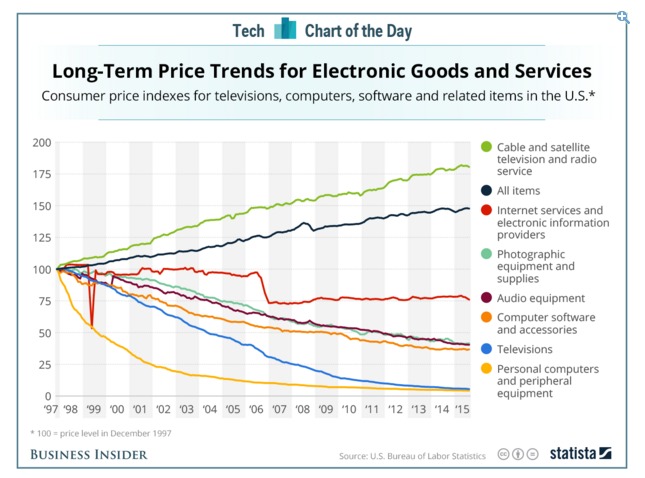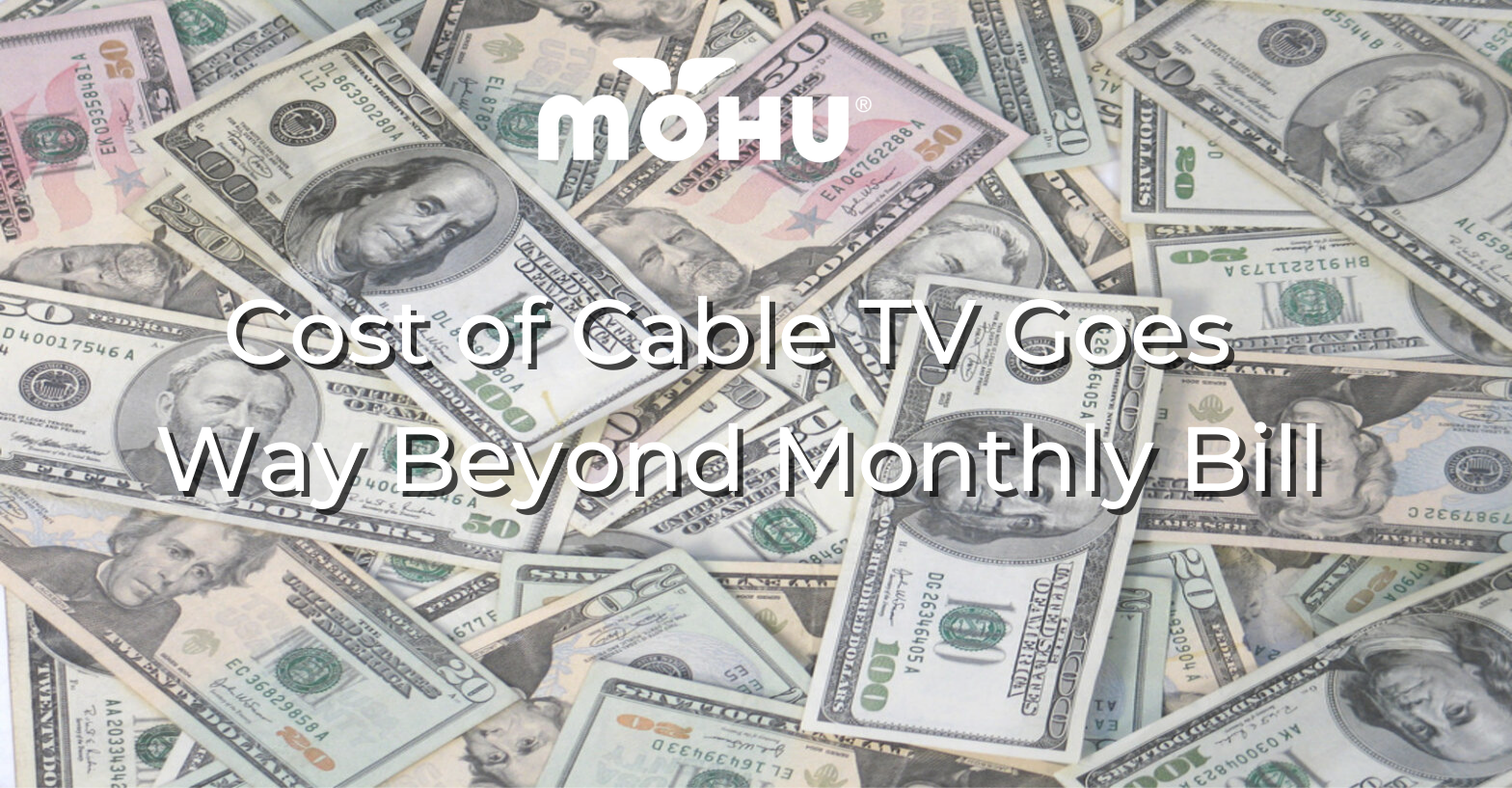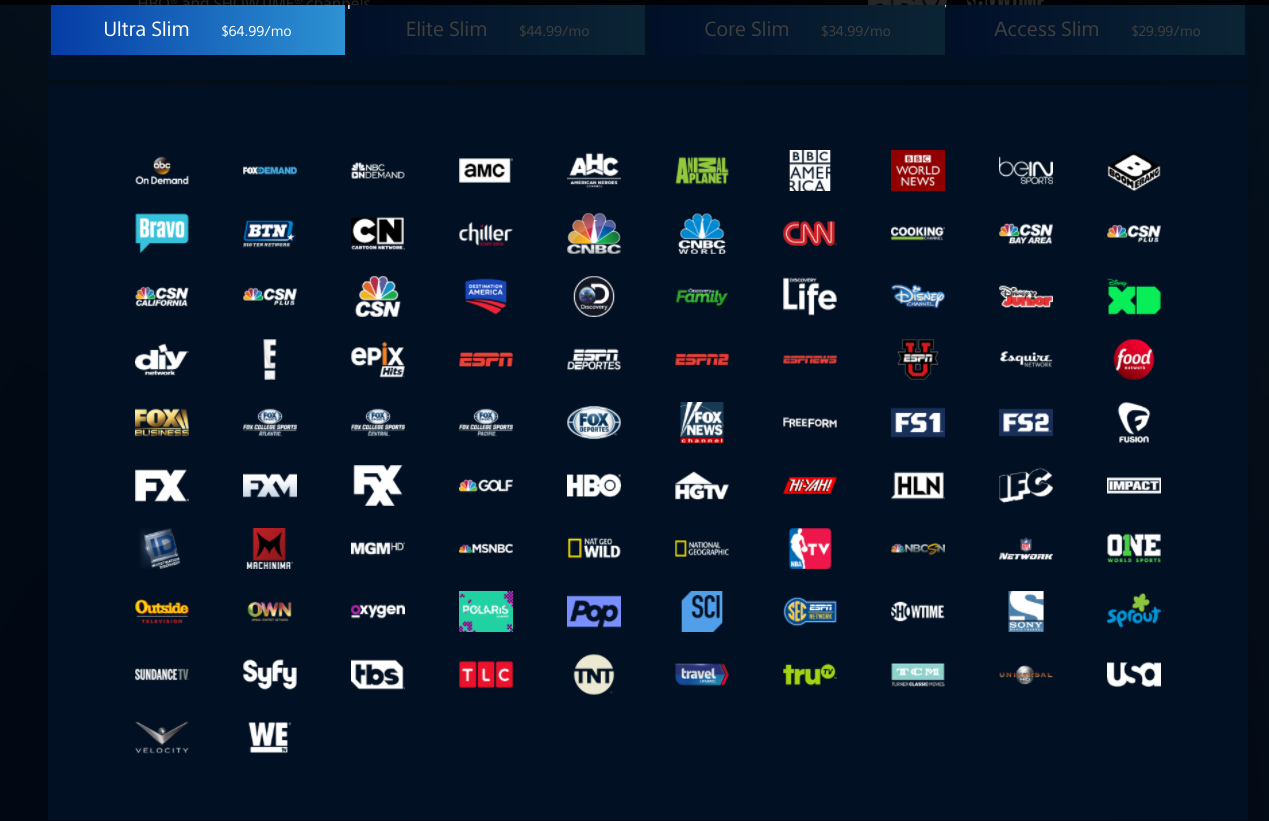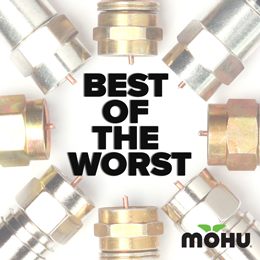Cable TV Costs Unavoidable
These are the direct costs to consumers who order cable TV service for their home.
Monthly cable TV channel subscription package.
Prices vary widely based upon what channel package is chosen, but promotional deals are common to entice new subscribers.
Special pricing is generally good for 6 to 12 months, and is subject to change without notice per your contract’s fine print. Costs for channel packages will sharply rise when promos end, and cable companies may or may not be willing to renegotiate contracts with customers.
A basic cable TV package may be as low as $20 to $30 on promotion with about 20 channels, however if additional channels are desired the price quickly goes up.
Most cable TV subscribers in the US currently paying $99 or more a month for cable TV service.
Monthly cable TV set-top box rental fee applied to your bill as a per-box charge.
Cable TV package price may include one set-top box rental, but generally it is a separate fee.
In my area Charter cable boxes rent for $7 per month per box. Subscribers are required to have at least one box if they order cable TV service. If more than one cable box is requested monthly rental fees multiply accordingly.
One-time fees associated with set-up or wiring changes at your location.
Your cable company may require an update of your existing wiring or the installation of cable TV jacks in various rooms of your house. This fee generally is seen as a service fee of $25 to $50 on your initial bill.
Fees for monthly line maintenance and taxes.
The line maintenance fee ($5 to $10 per month) is one you can opt out of, but if the cable company has to come out to your house to make a repair, you may be on the hook for a service call charge if you didn’t agree to pay this fee when you signed up.
Taxes are always part of the deal, but if you watch your cable TV bill carefully, you may notice this fee changes without warning – and it always goes up!
Always-on power consumption costs.
Obviously it is expected you’ll be paying for electricity to power electrical appliances in your home. However cable TV set-top boxes use power even when you think they are turned off. This constant energy drain can really add to your electric bill each month!
Better Choices That Cost Less
Every Type of Tech Product Has Gotten Cheaper Over the Last Two Decades – Except for One. Cable TV’s high costs are real and rising.
Not only do cable costs continue to rise, but as we continue to pay for more and more channels, we still watch very few of them. On average, consumers pay for 189 channels yet watch just 17. So not only are you wasting money on channels you don’t watch, you’re wasting time sifting through the noise to find the few channels and shows you do want to watch.

Affordable, Flexible & Eco-friendly Alternatives
Free Over-the-Air TV
Cord cutting; using an over air antenna to obtain free broadcast television, is the best way to get free TV from all the major networks. For a one-time equipment cost as low as $20, cordcutters enjoy all the major networks: ABC, CBS, NBC, FOX, PBS and others, available in their area.
Crushed Cable Boxes Transformed into Antennas
Current cable TV subscribers can easily cut the cord and transition to using a digital HDTV antenna to get free TV. Setup is simple, and many channels are broadcast in high definition. And to help ease the environmental impact of ditching overpriced cable and its antiquated set-top box, Mohu has just introduced ReLeaf using the same technology of its top-rated Leaf 30 antenna but made from recycled materials, including most notably plastic that is 100% recycled cable set-top boxes.
Cordcutters don’t have to worry about monthly cable TV subscription fees, set-top box rental fees or the continual energy drain these boxes have even in standby mode. The choice to cut the cord immediately saves you money, and allows you to regain the ability to choose what to watch and how to watch it.
Streaming Services
In addition to over air TV, many cordcutters choose to enjoy streaming media services to supplement their entertainment.
Netflix, Amazon, Hulu and Sling TV, are all great low cost options. Each streaming service can be viewed on multiple devices (TVs, tablets, smartphones, PCs, streaming devices) and none of them require a contract so they can be cancelled at any time. Plus, they all offer free trials so you can “try before you buy.”
Personally, I’ve never regretted cutting the cord with cable TV and I have saved thousands of dollars by doing so. I’m no longer locked into costly contracts with unexpected price hikes, and my home is more energy efficient without the use of cable boxes.
Overall Cost of Cable TV
Cable TV costs are more than just the monthly subscription fee you pay to your cable company to gain access to television channels.
Individually the monthly costs related to your cable TV include subscription fees, state and federal taxes, line maintenance fees, monthly rental fees for each cable TV set-top box you use in your home and the cost of the electricity used to power the cable boxes which are always on – even when you think they are off.
Globally there is the rarely considered environmental cost of cable TV use: millions of outdated or broken set-top boxes. This e-waste; piled high in warehouses or dumped in landfills, should be considered a hidden cost of cable TV that impacts us all.
It is all these ever-rising costs, coupled with a continual lack of responsiveness by cable companies to customer concerns that have many cable TV subscribers actively seeking less costly, greener alternatives.




